Written by John Hertig on The Prepper Journal.
Editors Note: Another guest post from John Hertig to The Prepper Journal. A follow-on article to his recent post on Building Water Storage Systems. As always, if you have information for Preppers that you would like to share and possibly receive a $25 cash award as well as be entered into the Prepper Writing Contest with a chance to win one of three Amazon Gift Cards with the top prize being a $300 card to purchase your own prepping supplies, enter today!
Although the average person can survive for three weeks without food, it would be very unpleasant, and it would make it difficult if not impossible to effectively do any other survival related task. Having food on hand for an emergency or disaster is very wise. It is likely that the grocery stores will be stripped very quickly and not replenished until after the situation is resolved. Although this could be a matter of a few days, it is more likely to be weeks or months or even longer. Unless you want to be one of those rioting, looting or perhaps just starving, make sure you always have some food on hand.
How much food should you have stored up? Ah, that is indeed the question. Food provides 1) calories, 2) nutrients your body needs and 3) relief from hunger pains. Calories are pretty straightforward. 2000 calories is considered a “normal” diet for the average person under standard conditions. 1200 calories is considered a “survival diet”, if you are inactive, like in a lifeboat. 800 calories is for a doctor supervised extreme weight loss diet. On the other hand, if you are very active (as you might be in survival conditions) you might need 3000 calories a day or even more.
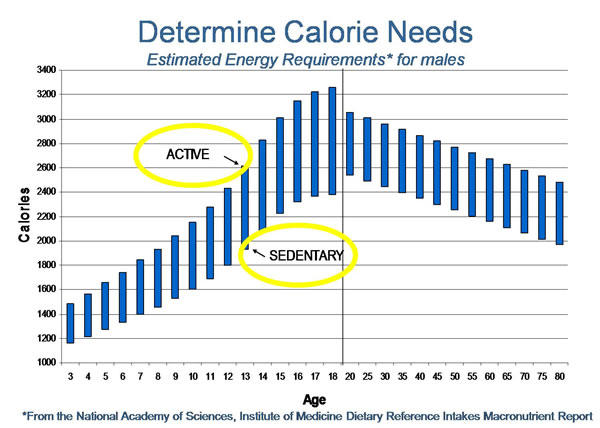
Choose the calorie level appropriate for each person in your group and the likely activity level, and figure out how long you want to maintain that level for. I’d say at least a month, and a year or even more would not be too much if you can manage it, both from a cost and a storage standpoint.
 Nutrition is a more difficult consideration. Your body needs protein, vitamins and minerals, and some other stuff we don’t think of or even really know about. And if you don’t get any fiber, it probably won’t kill you but you might wish it did.
Nutrition is a more difficult consideration. Your body needs protein, vitamins and minerals, and some other stuff we don’t think of or even really know about. And if you don’t get any fiber, it probably won’t kill you but you might wish it did.  The vitamins and minerals can be augmented with QUALITY supplements; you might as well get a few years worth. Note that the majority of mineral supplements are what we call “rocks and rust”. This does not mean the minerals are not there, but it does mean that they are wicked hard for the body to extract, and as you get older, the body gets continuously worse at extracting minerals. By the time you are into middle age, you are probably getting only a few percent of the minerals these supplements provide. You can tell these by looking at the ingredients list. If you see a lot of words ending in “ate” (calcium carbonate) and “oxide” (ferrous oxide), you are looking at “rocks and rust” minerals. Search and find minerals which are “chelated”; they are significantly easier for the body to extract the minerals from. The most easily extracted minerals are in the form of “colloidal suspensions”, but these are liquid, tend to be more difficult to store and use, highly expensive and have a short shelf life. Plus they are often “natural”, which means the balance of minerals in them is “randomized” (2% of the recommended amount of one and 2000% of another).
The vitamins and minerals can be augmented with QUALITY supplements; you might as well get a few years worth. Note that the majority of mineral supplements are what we call “rocks and rust”. This does not mean the minerals are not there, but it does mean that they are wicked hard for the body to extract, and as you get older, the body gets continuously worse at extracting minerals. By the time you are into middle age, you are probably getting only a few percent of the minerals these supplements provide. You can tell these by looking at the ingredients list. If you see a lot of words ending in “ate” (calcium carbonate) and “oxide” (ferrous oxide), you are looking at “rocks and rust” minerals. Search and find minerals which are “chelated”; they are significantly easier for the body to extract the minerals from. The most easily extracted minerals are in the form of “colloidal suspensions”, but these are liquid, tend to be more difficult to store and use, highly expensive and have a short shelf life. Plus they are often “natural”, which means the balance of minerals in them is “randomized” (2% of the recommended amount of one and 2000% of another).

Protein is a simple concept, but difficult in a food storage program. Meat is protein; storing meat is a challenge. Meat is also a COMPLETE protein; there are vegetable sources of protein building blocks, but you have to mix and match to get complete protein. For instance, beans and rice combinations are a staple for vegetarians, and survivalists. It would be wise to peruse vegetarian recipe books for other combinations of vegetables which add up to complete protein.
If your body does not get enough fiber, it messes up the bowel system, leading to severe constipation. Although some of the food storage items we will consider are high in fiber, others are seriously lacking. Based on what you choose for your food storage plan, you might want to have some powered fiber you can add to your meals; Benefiber is a decent one.
Water First
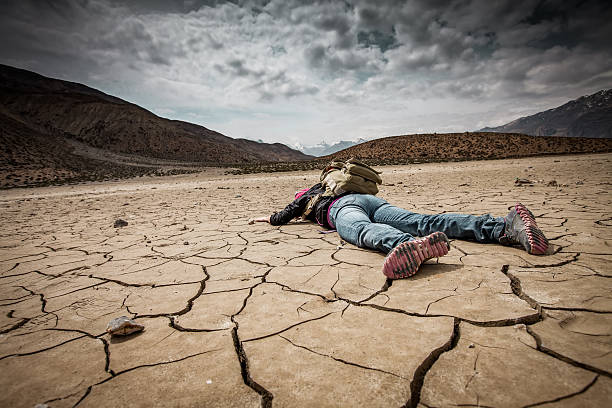
You can plan and research food storage all you want, but before you start implementing that plan, make sure you have WATER (>>> see the article here <<<). Water is necessary for life itself as well as the digestion and in many cases, the preparation of food. Having three weeks of food and three days of water is a waste of more than two weeks of food. You’ll be dead before you can eat it all (unless you can trade it to someone else for water). So don’t start buying food until you have a water plan in place, and to the degree practical, implement both plans “together” so you won’t run out of one before the other.
Types of Food
There are many types of food, some very suitable for long term storage and others only good for a few days under the best of conditions. And some of this food is very tasty, some barely palatable, some easy to prepare, some difficult, some healthy, some not so healthy and some downright harmful. It is best to have as much variety as is practical for your circumstances.

– Ready to Eat
This has obvious advantages from a convenience standpoint, but tends to take up the most room and weigh a lot, be moderately high in price and of questionable palatability. The ubiquitous MRE (Meal, Ready to Eat) is a prime example of this. Some people call MREs “three lies for the price of one”. Still, they have utility, when you want something meal-like you can transport or distribute, which does not require anything else. So having a few on hand is not at all a bad idea. I would not suggest a LOT of them though, unless you have tried them, find them palatable and adequately healthy, and have the money and storage space for them. Generally you will want to replace them after five years or so; if you will be heavily into MREs, I suggest “rotation”, where you get in some new ones and eat the oldest ones on a regular basis even if conditions are normal.


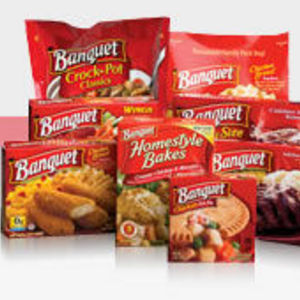

But what about “TV Dinners”, you say? Well, they are not quite “ready to eat”, but they can be filling, some are tasty and a few even nutritious. And you can get them for a decent price on sale. If you have a working freezer and microwave (or oven for the original TV Dinner, if those are even still available), they can be quite a good choice. I stock up when they are on sale and use them regularly. But let me suggest that to assume you will have a working freezer or microwave (or oven) during a disaster has a good chance of being a fatal assumption. Either you won’t have them in a working condition and all that food you were counting on will spoil or be “unusable”, or you do manage to retain those appliances in working condition, but can’t prevent desperate people from knowing you have them (sound, light, smell) and they attempt to acquire it for themselves.
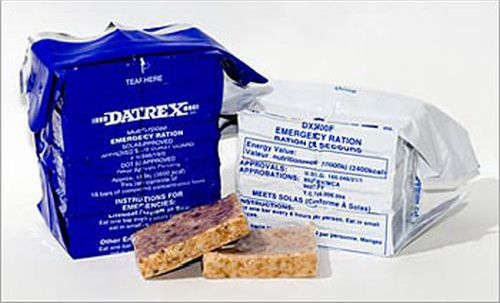

The other typical “ready to eat” food is known as “survival rations” or “emergency food rations”. These are prepackaged blocks of a “bread/cake/biscuit” substance which provides a calorie specific, compact “food” source which requires minimal water to digest. They may taste “meh”, they generally provide minimal nutrition, and they often contain things which the healthy person should be avoiding. But again, they have their purpose, putting a survival source of calories into a package which stores and packs well, at not too ridiculous a price. Mainstay and SOS are a couple of the major sources of these, and they are available in various sizes, usually some number of 400 calorie pieces, allowing a calorie intake suitable to the situation. Some store in high heat ok; being designed for a lifeboat, they store in a car trunk fine. On the other hand, they generally claim only a five year shelf life, so should be replaced that often. Again, having a few of these is a good idea, in case you need a self contained, no preparation food option which is even smaller than MREs.


Of course, there are the “antique” survival rations which you can make yourself (using recipes from the internet). The North American indigenous peoples often used “pemmican”, a dried mixture of meat, fat and fruit for long trips or when hunting/gathering was impractical. Old sailors subsisted during long journeys on “hard tack” (“pilot bread”, “sea biscuit” or other less polite names). This is a hard lump of “paste” (flour and water, dried), occasionally with salt added. Jerky is another way to have some protein, although it does not really last that long, several months at best. I make my own jerky, vacuum seal it, and store it in the freezer. I expect it will last as long as the freezer works and for several months after the freezer ceases to work.


I know someone who loves Chef Boy-R-Dee pasta, cold, right out of the can, and she is still alive after years of this. Thus, I have to reluctantly consider this also “ready to eat” food suitable for storage. See the notes about canned food, below.
– Minimal Cooking Meals

As we see, when your stored food is necessary, there is a good chance you won’t have a microwave or stove handy, and if you do, using them can announce that you have food, so the “best” storage food is that which needs the least cooking. There is a wide variety of “freeze dried” or “dehydrated” meals out there, often originally aimed at backpackers. These can be very tasty, store and transport easily, and often have an advertised shelf life of twenty five years. This makes them very attractive for a food storage program, and although pricey, there are some which are not out of reach of the common person. There are generally two “classes” of these meals – one where you boil water, open the bag, pour in the water, close the bag and wait a specified period of time, and one where you bring water to a boil, pour in the pouch and boil it for a specified length of time. The first one is preferable as it uses a lot less fuel and is easier to clean up after, as well “advertises” itself to the world less. Make sure which type you are getting before paying for a lot of them. Best is to start out with some samples, which you actually try, preferably under “representative” conditions (candle or flashlight, primitive stove). That way you can make sure the taste is to your liking, and see how well it works for you under crisis conditions.



A way or three of cooking needs to be part of your food storage plan. I’m partial to the classic Coleman camp stove, and the disposable gas cylinders for it are quite cheap at WalMart. I also have an adapter which allows me to run it from a standard barbecue grill propane cylinder. The barbecue itself should probably be avoided, as outdoor cooking produces smells which could attract unwanted attention. I also have some of those little folding pocket stoves with the blocks of fuel, although that is strictly a last ditch option. Some people like the cans of “Sterno”. If you use a wood stove, you can cook on it, or if you have a lot of good sized logs cut to firewood lengths but not split, and a drill, you can make an effective “rocket” stove. Both of these can be effective, but tend to announce their presence. Backpacking stoves will work, and having one is not a bad idea in case you need to “bug out”, but they tend to be small and not hold much fuel, so are less than ideal for daily use.
– Canned Foods
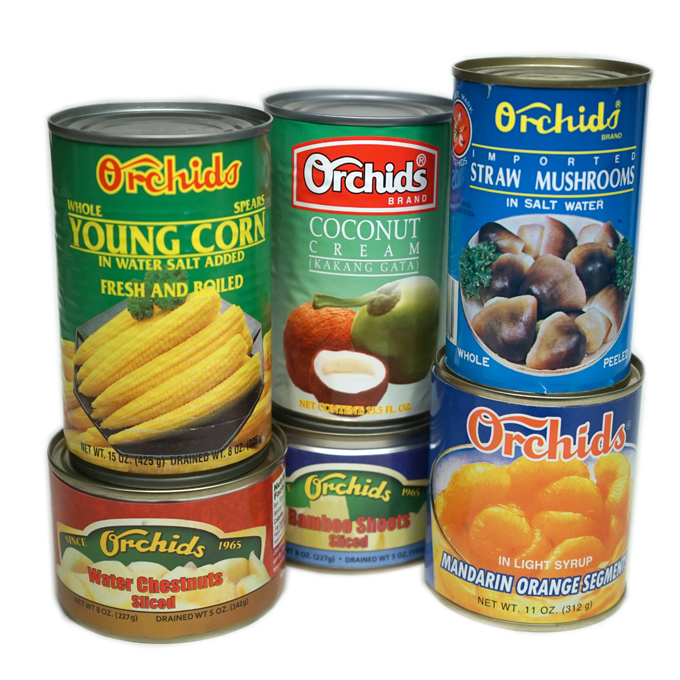
I’m primarily focused here on food which has been commercially packaged in “tin” cans. If you know what you are doing, you can “can” your own food, usually in glass jars (they should call it “jarring”). But if you screw up, you can poison yourself this way. And I don’t know how durable the glass jars are or how long the contents last.


Most commercially canned food these days has a “best by” date. The implication is that after this date, it is inferior, and that is not totally incorrect. But in many cases, if the can is not swollen, rusted, leaking, distorted or otherwise different from when it came from the store, it is probably still good. Maybe it has lost some nutrition, but canned food is not known for its nutrition, so you will be supplementing it anyway, right? I got a bunch of canned soups eighteen years ago and I still eat one on occasion with no distress and it is still tasty.


On the other hand, canned fruit, particularly pineapple which I love, has been my nemesis. It appears that every time I go to my food storage, one has sprung a leak and gummed up everything. It might have to do with fermentation causing gas, which applies pressure to the seams until one gives a little. Or maybe it eats through the seal, although that would seem to be more the behavior of something acidic. I don’t recommend storing canned fruit or anything acidic in your long term storage. Vegetables are an option though, although personally I find the taste and appearance unpleasant in addition to the questionable nutrition value. Where cans shine (for me, at least) is soups and meats, as well as some semi-meals such as chili and the Chef Boy-R-Dee pasta mentioned above. Things such as beans and potatoes are good choices and I have some other “regular” vegetables even though I don’t eat them unless I have to.

The best place for your food storage cans is right in your normal cabinet or pantry. As you get new cans, you should be eating the oldest ones, and if they are right to hand, this is much easier than remembering to go to your storage. In particular, cans are a good way to get some protein into your storage. Tuna is a good choice and often on sale cheap; sometimes you can find chicken on sale as well and occasionally beef. It used to be that canned hams were easy to find at a good price, but I have not seen them lately. And then there is “Spam”, which I have studiously avoided learning anything about. But if you know it and like it, why not include some?
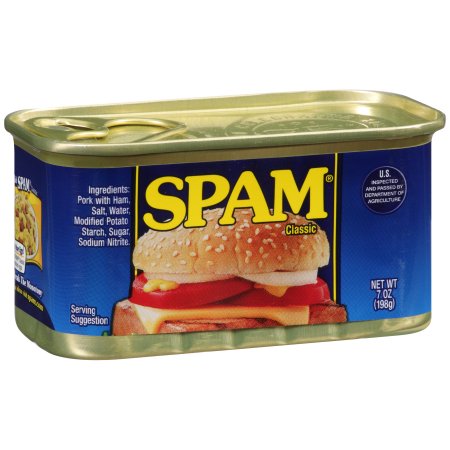

Have as much desirable canned food as you can store, and “rotate” it regularly. Not only does it maximize the freshness of your stock, but you will be “used” to preparing and eating it, so moving to crisis mode will be less stressful. Make sure you have a can opener or ten. It would be distressing to have a bunch of food you could not open (although you actually can open a can without an opener if you know how ). Canned food can be prepared with minimal cooking, or even in some cases eaten right out of the can without preparation.

– Staples
This is the “classic” storage food – things like wheat, dry beans, rice, oil, powdered milk, salt and honey/sugar. This is the cheap way to store lots of food, but it requires real skill to make an edible meal out of it. If you are going to go this route, make sure you learn how to cook any ingredient and try several recipes before you invest in a lot of anything. In particular, make sure you know anything you need to do to avoid the result being harmful. For instance, many beans, particularly red kidney beans, have toxin as a lectin or phytohemagglutinin, and need to be boiled vigorously for 15 minutes to destroy the toxin before simmering. Fail to do this, and your delicious and “healthy” dish will bring on a violent case of food poisoning.



The storage life of staples can be quite long. I have cans of wheat from the 80’s which are supposed to be good “forever”, but I haven’t bothered to find what I can do with them as is; I probably should do that sometime soon. I do have a bicycle powered grinder to make flour out of them, and flour I DO know how to use. Brown rice is better for you, but white rice stores better. Much of the nutrition has been removed so the bugs won’t eat it, and it can be made into delicious and filling recipes or eaten by itself, but if you don’t supplement it with Thiamin (vitamin B1) you can come down with BeriBeri, a condition common among those who subsist mostly on white rice.
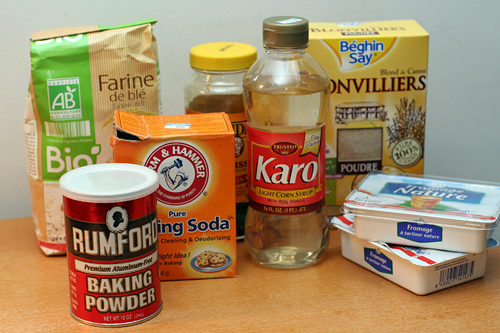

In addition to any bulk items, make sure you have things like baking powder, salt, pepper and other spices and ingredients you like or need to give the taste of your meals a boost or support a particular recipe. Powdered eggs and butter are available, which can help.
The Mormon Church requires their members to have a year’s supply of food, and is a good source of information on staples food storage and maybe even a source for some of them. You don’t have to be a member. Costco or Sam’s Club are also sources of staples in bulk, but you do need to be a member. 
– Other Packaged Foods
Avoid food in boxes and bags; they can become infested with bugs or penetrated by mice, and even if unmolested don’t have that long a shelf life. If you want anything like this, store it in an additional impermeable container which can be sealed, and rotate it often.

Children and Food Storage
Children can be picky eaters, and even refuse to eat unless it is something they are used to. Attack this on two fronts: include some of their foods or ingredients for their foods in your plan, and try to entice them into liking other stuff in your storage plan.
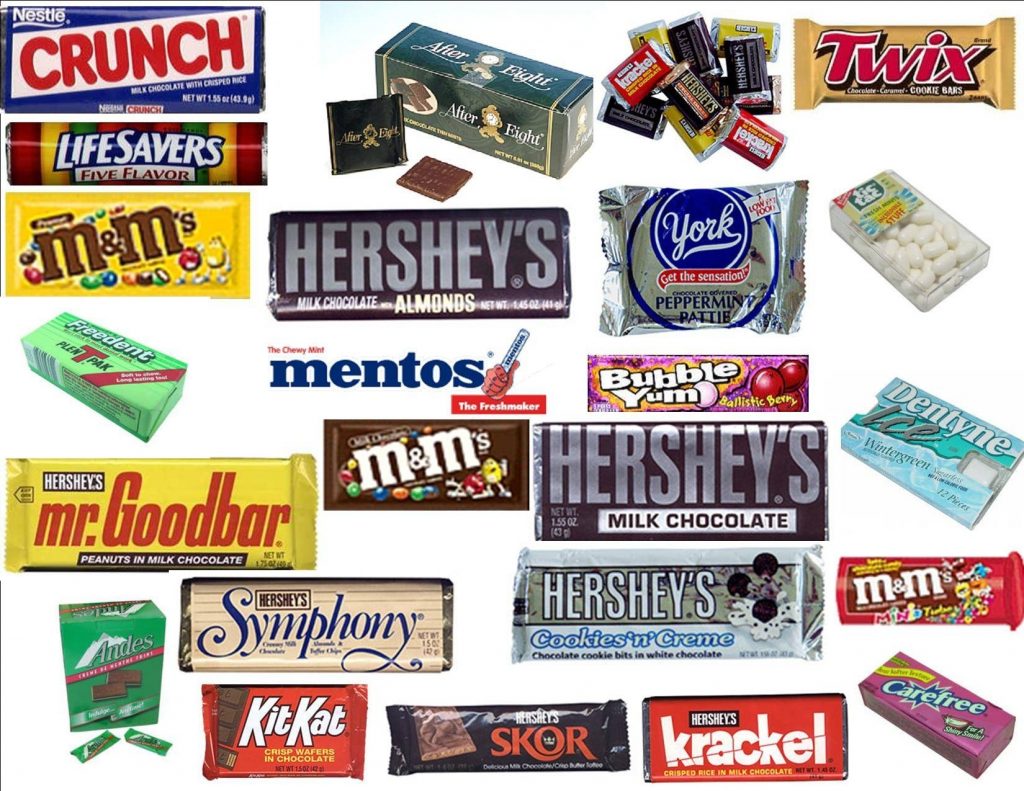

Commercial Food Storage Plans
You can do your own plan, and probably will come out ahead (spend less; have the plan most suitable for you), but if you just don’t have the time or inclination, you can turn to a commercial food storage provider. The first rule of this is, if they talk to you about “servings”, then there is a chance they are either idiots or they are trying to rip you off. “Servings” are meaningless. You want to know CALORIES, because that is the key measurement to ensure you have “enough” food each day. A “serving” is in no way any kind of standard; it is whatever they decide to give you. I’ve viewed plans which provide “12 servings” per day, that when you compute the calories, just barely comes to 800 calories, which is not a good survival target. Some will say “oh, but we expect you to supplement our food plan with other food”. Really; where do they expect this “other food” to come from? Do they really think I’m going to buy their one year of one third days plan and then buy more food for the other two thirds of each day? Or buy a “one year supply” which lasts for four months or will harm me if I try to make it last the advertised one year?
Any food storage plan which attempts to hide the calories and/or the ingredients is highly suspicious and probably should be avoided. Any plan which claims to be good for a specified period of time needs to be carefully examined to make sure that you are getting enough calories during that period of time.
Food Replenishment
If you have access to land, it would be a good idea to have some “survival seeds” so you can start growing your own food. Use “heirloom” seeds which reproduce themselves; “engineered” seeds may be “better”, but they tend not to reproduce themselves.

Gardening is something you should try on a small scale NOW, even if just a “patio or container garden“, so you won’t make the silliest mistakes when you can least afford to. Get some books so you know when and how to plant each crop you are interested in, as well as care for it and harvest it. Without land, you can still grow some things using hydroponic (soil-less gardening) techniques. Since there is no soil, there are no nutrients for the plants, so you have to add them manually. Again, this is not something you want to experiment with in a crisis situation. And growing any kind of food is a long term proposition, so be sure you have other plans for the interim between planting and harvesting.
Again, with land, you can raise livestock. Chickens are fairly small and don’t take a lot of room, but provide eggs and meat. They are somewhat noisy, and unless confined somehow, can range far enough to be at risk or damage your crops. Rabbits are small and quiet and more easily confined, and also provide meat as well as fur. Goats are a step up and a way to add milk (and even cheese) to your long term diet, as well as being another source of meat. Other animals are a possibility, but not for the casual or untrained person.
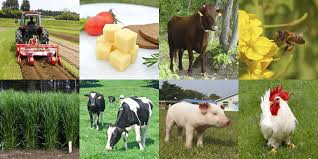
Aquaculture (fish farming) is another way of growing your own food. This also gets exciting, as fish tend to poison their own environment so you need to change the water regularly. This can be a challenge in a stagnant body of water. A way to grow fish and plants in a relatively easy to conceal and maintain environment is Aquaponics, where the fish poop is converted to food for the plants and the plants purify the water for the fish.
If you have the skills and equipment, hunting can bring home the bacon or at least the venison (or rabbit, squirrel, dove, quail, etc). Of course, there will be a lot of other people with the same idea, so this should not be a major part of your food plan. Similarly, trapping and fishing can supplement your food supply. And there are some edible plants you could forage for, but you need to know what you are doing IN YOUR AREA to avoid things which could harm you.
Scavenging for abandoned supplies is also a possibility, though fraught with risks. What if it was not as “abandoned” as you thought? And you have to risk running into other people who are desperate or psycho or looking to rob you or worse. Although you should have the skills and tools to access abandoned supplies, you also need to focus on the skills and tools of avoiding detection.

As with water, the government may get around to handing out rations. Make sure you are fully aware of the risks inherent in coming to the attention of the government, and to the degree practical, try not to remind them that you exist.
Disaster Food Preservation
Without refrigeration, unprocessed food tends to spoil quickly. Investigate, gear up and practice primitive preservation techniques such as evaporation (those round stacked evaporators are toys’ the “real” ones tend to blow from the back across rather than from the bottom through), curing, root cellars and smoking. When disaster strikes, evaluate the food you have on hand and use that which spoils quickly to eat first or preserve. Once all the normal food is eaten, spoiled or preserved, then go to your food storage.
The post Building your Food Storage appeared first on The Prepper Journal.
from The Prepper Journal
Don't forget to visit the store and pick up some gear at The COR Outfitters. How prepared are you for emergencies?
#SurvivalFirestarter #SurvivalBugOutBackpack #PrepperSurvivalPack #SHTFGear #SHTFBag

No comments:
Post a Comment